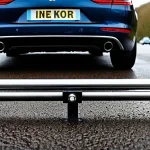Wheel Alignment and Its Impact on Tire Lifespan
Proper wheel alignment plays a critical role in extending tire lifespan. When wheels are correctly aligned, tires make even contact with the road, preventing uneven tire wear. UK drivers often overlook this, yet misalignment can drastically reduce how long tires last.
Typical signs of improper wheel alignment include uneven tread wear, pulling to one side, and a crooked steering wheel when driving straight. These symptoms alert UK drivers that their vehicle may need an alignment check. Ignoring them can accelerate tire wear, leading to costly replacements sooner than expected.
Have you seen this : Boost your fuel economy: top tips for improving vehicle aerodynamics on uk motorways
Common causes of misalignment on UK roads include potholes, curbs, and rough terrain. Frequent encounters with these obstacles knock wheels out of their proper position. Weather conditions, such as wet or icy roads, can also contribute by causing slips that disturb wheel angles.
Regularly checking and correcting wheel alignment helps UK drivers maximise tire lifespan, improves fuel efficiency, and enhances vehicle safety. Early identification of misalignment signs ensures timely maintenance, protecting both tires and driving experience.
Also to discover : Unlocking the secrets of 90s british cars: the ultimate handbook for diagnosing and fixing electrical issues
Practical Wheel Alignment Tips for UK Drivers
Understanding wheel alignment tips is essential for UK drivers aiming to maintain vehicle performance and prevent tire wear. One effective method to check alignment at home involves inspecting tire tread wear patterns. Uneven wear often indicates misalignment. Additionally, if your vehicle pulls to one side or the steering wheel vibrates, it’s time to check alignment professionally.
For UK driving conditions, scheduling a wheel alignment every 12,000 to 15,000 miles is recommended. The often wet and uneven terrains, including frequent potholes and curbs, can quickly knock your wheels out of alignment. Being proactive helps prevent premature tire damage and uneven wear.
UK roads pose specific challenges — potholes and curbs are common culprits of alignment issues. After hitting a pothole or mounting a curb, it’s wise to inspect your wheel alignment promptly. Ignoring these obstacles can lead to costly tire replacements and compromised vehicle handling.
Regular wheel maintenance under these conditions ensures safer drives and extends tire lifespan. Implement these wheel alignment tips to protect your investment against the unique challenges of UK roads.
Recognising and Addressing Wheel Misalignment
Identifying wheel misalignment signs early is crucial for maintaining safe vehicle handling. Common indicators include uneven tyre wear, the vehicle pulling to one side, and a steering wheel that isn’t centered when driving straight. Such symptoms affect your control and can escalate safety risks if ignored.
In the UK, wheel misalignment is closely linked to MOT standards. While the UK MOT does not explicitly test wheel alignment, poor alignment can cause tyre defects or handling issues that fail the inspection. Therefore, ensuring alignment meets professional standards helps avoid potential MOT failures and keeps your vehicle roadworthy.
Addressing misalignment promptly requires professional wheel alignment services. These experts use specialized equipment to measure and correct the angles of wheels according to manufacturer specifications. Regular alignment checks—especially after hitting potholes or kerbs—help preserve handling integrity, extend tyre life, and ensure compliance with UK MOT standards. Taking proactive steps lets drivers maintain stability and confidence on UK roads, aligning safety with legal expectations.
Maximising Tire Life Through Routine Maintenance
Proper tire maintenance is essential for drivers navigating the diverse conditions of UK roads. A crucial aspect involves regular tire rotation, which ensures even wear across all tires and extends their lifespan. Rotating tires every 6,000 to 8,000 miles helps balance the tread wear caused by different driving patterns and road surfaces common in the UK.
Incorporating wheel alignments into your routine maintenance schedule can prevent uneven tread wear and improve vehicle handling. Misaligned wheels increase stress on tires, reducing their longevity and affecting safety. Regular alignment checks, ideally during tire rotations, help maintain optimal contact with the road.
Correct inflation pressure also plays a pivotal role in tire maintenance; underinflated or overinflated tires wear unevenly and can compromise fuel efficiency and safety. Checking tire pressure monthly, especially before long trips on often challenging UK roads, is advised.
Creating a tailored maintenance schedule suited for frequent UK drivers means combining timely tire rotations, wheel alignments, and inflation checks. This systematic approach maximises tire life and enhances overall driving performance, making it a practical, cost-effective strategy.
Choosing the Right Robot Hoover for Your Home
Selecting the perfect robot hoover involves weighing several practical factors to match your lifestyle. Start by considering the floor types in your home. A robot hoover designed for hardwood may not perform as effectively on thick carpets. For homes with mixed surfaces, look for models with adjustable suction settings.
Battery life is critical. A robot hoover with longer battery life can cover larger areas in one go, reducing the need for frequent charging. If your home is multi-level, a robot hoover that can easily dock and resume cleaning after recharging is beneficial.
Another important factor is the mapping and navigation technology. Advanced laser or camera-based models create detailed maps, enabling efficient cleaning paths and preventing repeated cleaning of the same spots. If you have pets, opt for a robot hoover with robust brushes and a high-efficiency filter to capture pet hair and allergens.
Noise levels can also impact your choice. Some robot hoovers operate quietly, suitable for use during busy hours or at night. Considering these factors will ensure your robot hoover meets your cleaning needs effectively while adapting to your home’s specific challenges.

